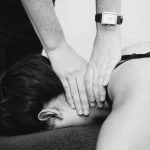Why a bike fit and Physio assessment can make you a better cyclist
Cycling is an excellent mode of exercise. For some it’s a great alternative to sitting in traffic, for others it’s fantastic for its low-impact nature, and on two wheels you can cram in a lot more scenery than you can manage whilst exploring on foot.
We’ve noticed there are plenty of people dusting off (or purchasing) their bicycles lately, and today I would like to talk about some of the common issues people have if they have never cycled before, or are starting to cycle more regularly than usual.
What is a bike fit?
It’s a good idea to get to know your way around the basics of your bike. There are little adjustments that can make a big difference to comfort and performance whilst riding, and this is what we call the “fit”. It is also true that there is no such thing as one perfect fit for any individual, as our bodies change with time. For example, if the old hamstrings have tightened up a bit over winter, the most comfortable riding position now might be different from, let’s say, six months ago.
The position where we use the body most effectively to generate power, is not necessarily the most comfortable. For many people it is best to start by seeking comfort until you’ve got plenty of kilometres under your belt (or wheels?) and then you can tweak things later as your body becomes more conditioned.
A good starting point is to set the seat height first. There are lots of ways to precisely measure where the seat should be, but an easy trick is to sit on the saddle and place your heel in the middle of the pedal at its furthest point. Your seat height is approximately correct if you can reach the pedal with a straight knee whilst maintaining your pelvis square (ie don’t lean/rock towards that side). This means that when you pedal through the forefoot, the knee will be slightly bent at the greatest point of stretch.
Next, you can position the handlebars at a comfortable height. This will vary, depending on your flexibility and experience. It will also depend on the size and shape of your bike. If your brakes are located on drop-down bars, this needs to be considered as you have to stretch further to use them.
Often the mechanics at your bike shop will be able to help you get started with your initial setup. When making adjustments, bear in mind the impact this has on other areas of your body. Usually, it is best to keep any changes you may wish to make incremental, and always seek advice in the presence of an injury.
Physiotherapists with experience in this area can help troubleshoot if the “fit” of a bike is actually contributing to your injury, and/or work through how to condition your body to meet the demands of cycling.
Here are some common issues for beginners:
- Sore bottom.
For many, this is simply a case of getting used to cycling, like wearing in a new pair of shoes. Most people find the investment in a pair of padded shorts called “nix” provides much welcome relief (despite the fashion statement), and the age-old adage of easing into it is all that’s required. For a beginner, it can be hard to imagine a bike saddle ever becoming comfortable to sit on! But trust me, with a decent setup and enough experience, getting on the bike is like putting on your favourite pair of sneakers.
Long hours on the saddle can lead to more complicated concerns, such as local numbness, or rashes and infections in the skin. Clearly, any concerns in this regard should be assessed by a doctor. Bike fit errors may include the shape, size or position of the saddle.
- Knee Pain
One of the most common reasons for people to give up cycling is irritation at the kneecap. This can develop like any overuse injury, and most often increasing distances or hills too quickly is a major contributing factor. However, there are a number of other items to consider.
Regarding bike fit, it’s worth reviewing your seat position. If the seat is too close to the pedals, it can contribute to pressure on the knee-cap as your knees are too bent all the time. Remember there should be periods in the pedalling action where the knee is nearly (but not quite) straight. Occasionally, footwear or cleat position may be to blame, if they do not support the movements your body is built to do. There are several adjustments to bike components that can be made to alleviate knee loads, so seeking advice is recommended if you are unsure.
Physiotherapists have also noticed poor core stability on the bike is commonly an underlying issue. This works in much the same way that reduced control around the hip can cause knee pain in runners, by allowing aberrant rotations through the leg as you are pedalling.
Otherwise a regime of regular stretching/foam rolling of the quadriceps and hamstrings is useful as a prevention or management tool for any cyclist.
- Back/Neck pain
Again, the most common reasons these complaints develop is after spending too long loading the body in a position it is not adapted to. Poor control of the trunk and pelvis (or poor endurance in these muscles), and poor flexibility are often the key biomechanical issues driving these aches and pains. A regime of exercises targeting spinal mobility, trunk strength, hip flexor and hamstring length are a great start to condition your body.
If the bike is set up for someone taller or more flexible, then it’s possible that over-reaching is a problem. The seat can be too high, or handlebars too low, or both! It’s often difficult to tell yourself if this is a problem, without someone watching your position whilst riding, particularly if you are symptom-free over short distances.
- Numbness
If you are experiencing numbness or cold fingers/toes, there is likely a biomechanical problem to resolve, which is either external or internal to the body. Examples include a position error on the bike causing compression or over-stretch somewhere, or a lack of endurance in the muscles supporting your riding position.
As you can see, riding further, or on hillier terrain, than your body is prepared for are the main reasons that most common complaints will arise. If you have an injury, an assessment with a Physiotherapist experienced in cycling can help identify biomechanical concerns in your body to address, or if adjustments to your bike fit are required.
Written by Physiotherapist Rosie Moore






